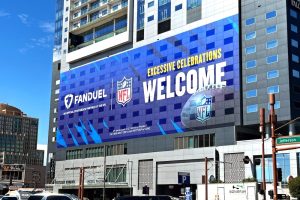Not everyone can, or should, drive a car to get where they need to go. This includes senior citizens, young teens, adults without a driver’s license, and people on vacation in a city away from home. This has left some people in the car-crazy United States to ask, “Why must we drive everywhere?”
While some communities have focused on micromobility infrastructure – expanding roadways for small, lightweight electric modes of transportation like electric bikes and scooters – others have looked at removing the need for motorized vehicles altogether. Here’s what to know about the 15-minute city.
What is a 15-minute city?
The 15-minute city concept stems from the goal of reducing carbon emissions, decreasing the reliance on cars, and allowing residents access to everything they need within a short walk or bike ride from their homes.
The 15-minute city isn’t necessarily a new idea, but rather a new iteration of urban planning that has come in waves over the last 100 years. In the early 1900s, urban planner Clarence Perry had the vision for “neighborhood units.” He believed that the planning of neighborhoods should be based on the needs of the people who lived there. Therefore, a neighborhood should include places to work, eat, shop, play, and get essential services like health care – all within a short walk. A similar idea took hold in the 1980s with the mass exodus from congested urban centers to the suburbs where kids could walk to school and families could walk and bike without worrying about cars whizzing by.
Other names for this walkable city concept include “20-minute city,” “complete communities,” and “mixed-use communities.”
Where are these cities?
The city of Paris has been actively converting portions of its city to walkable communities over the past few years to improve air quality and liveability for its residents. In 2016, a roadway alongside the Seine River used by over 40,000 cars a day – often gridlocked with traffic – was converted to a car-free linear park when after a six-month trial where cars were banned from the roadway went so well that the city voted to make it permanent.
Other international communities have also seen promise in the 15-minute city concept and incorporated it into their long-term community plans. This includes the city of Melbourne in Australia. Their government has developed criteria to demonstrate specific features of a 20-minute neighborhood, which include high-quality public spaces, climate resilience, and most importantly safety and accessibility for all citizens. The mayor of Busan, South Korea embraced the 15-minute city by making it a key aspect of his election campaign.
15-minute city plans have been proposed all over the United States as well from Portland and Seattle to Cleveland, Cedar Rapids, Iowa, and even Frisco, Texas.
Benefits of the 15-minute city
While some people may be against the idea, there are plenty of experts and residents who are willing to embrace the shift to a walkable city. According to the National League of Cities, the benefits of the 15-minute city include eliminating food deserts, expanding necessary services, reducing carbon emissions, and supporting local schools.
Walkable cities have also been found to be economically beneficial to the community as well. For example, a study from the American Association of State Highway and Transportation Officials found that pedestrian-friendly communities “help attract and retain professional talent, encourage neighborhood revival, increase tourism and stimulate local economies.” Additionally, it found that “greenways, sidewalks and bicycle facilities create more jobs per million dollars spent than other transportation investments.”







